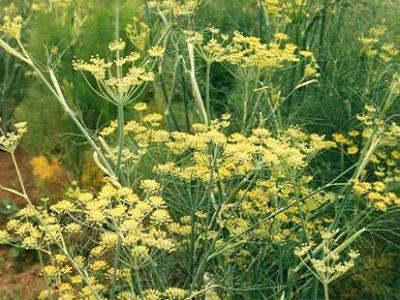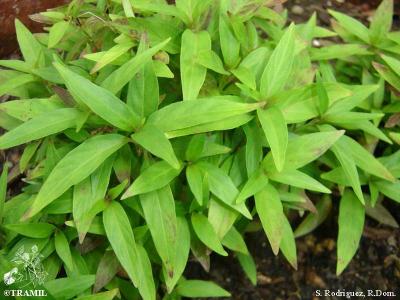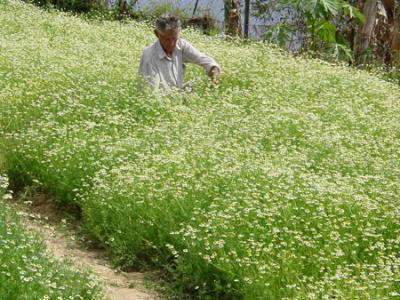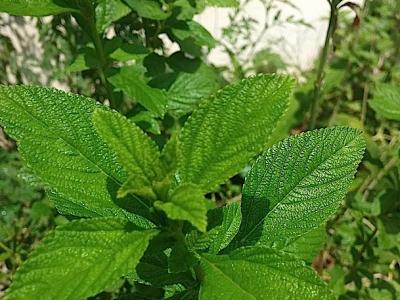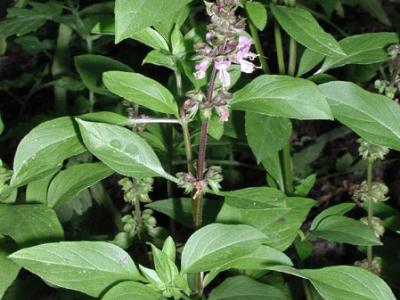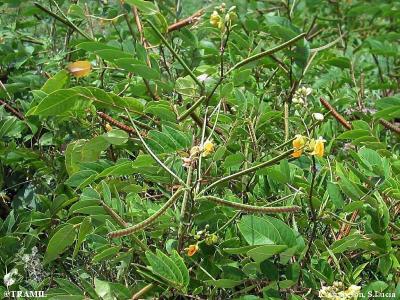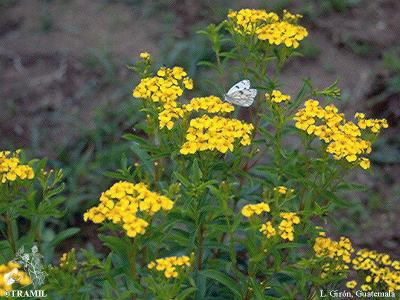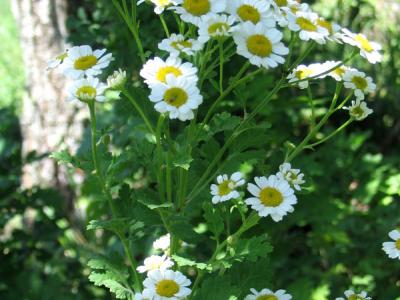(In territories with significant traditional TRAMIL use)
Haiti:
- anni
Dominican Republic:
- hinojo
seed and/or leaf, decoction, orally2
According to the information available:
The use for stomach pain, abdominal pain and flatulence is classified as REC based on the significant traditional use documented in the TRAMIL surveys, the validation and toxicity studies and the scientific information published.
If deterioration is observed in the patient or if the stomach pain persists for more than 3 days, seek medical attention.
The use for earaches is classified as REC based on the significant traditional use documented in TRAMIL surveys and toxicity studies.
Due to the risk that an earache may be due to otitis media or interna, an initial medical assessment is recommended. Its use is contraindicated in the presence of secretions from the ear and/or possible perforation of the eardrum.
All application in ears must follow the strictest hygiene measures in order to prevent contamination or additional infection.
If deterioration is observed in the patient or if the earache persists for more than 2 days, seek medical attention.
Not for use during pregnancy, breastfeeding or in children under 3 years.
The seed can produce hypersensitivity reactions.
The leaves of Foeniculum vulgare are a food of relatively widespread human consumption and an industrial source of essential oil.
For stomach pain, abdominal pain or flatulence:
prepare a decoction with 0.3-0.6 dried seeds or 3-5 grams of fresh leaves in 1 cup (250 millilitres) of water, boil for 10 minutes in a covered vessel. Leave to cool, strain (filter) and drink 1 cup 3 times a day26-27.
For earaches:
Wash the leaves adequately, crush them and place 2 drops of the juice obtained in the affected ear 2 or 3 times a day.
Preparations must never be stored for more than 24 hours, even if refrigerated.
1 GERMOSEN-ROBINEAU L, GERONIMO M, AMPARO C, 1984
Encuesta TRAMIL. enda-caribe, Santo Domingo, Rep. Dominicana.
2 WENIGER B, ROUZIER M, 1986
Enquête TRAMIL. Service Oecuménique d'Entraide SOE, Port au Prince, Haïti.
3 HAGINIWA J, HARADA M, MORISHITA I, 1963
Pharmacological studies on crude drugs. VII. Properties of essential oil components of aromatics & their pharmacological effect on mouse intestine. Yakugaku Zasshi 83:624.
4 AKUNZEMANN J, HERRMANN K, 1977
Isolation and identification of flavon(ol)-O-glycosides in caraway (Carum carvi L.), fennel (Foeniculum vulgare Mill.), anise (Pimpinella anisum L.), and coriander (Coriandrum sativum L.), and of flavone-C-glycosides in anise. I. Phenolics of spices. Z Lebensm Unters Forsch 164:194-200.
5 HARANATH P, AKTHER M, SHARIF S, 1987
Acetylcholine and choline in common spices. Phytother Res 1(2):91-92.
6 ZOBEL A, BROWN S, 1991
Psoralens on the surface of seeds of Rutaceae and fruits of Umbelliferae and Leguminosae. Can J Bot 69(3):485-488.
7 CESKA O, CHAUDHARY S, WARRINGTON P, ASHWOOD-SMITH M, 1987
Photoactive furocoumarins in fruits of some Umbellifers. Phytochemistry 26(1):165-169.
8 MENDEZ J, CASTRO-POCEIRO J, 1981
Coumarins in Foeniculum vulgare fruits. Rev Latinoamer Quim 12(2):91-92.
9 SALEH N, EL-NEGOUMY S, EL-HADIDI M, HOSNI H, 1983
Comparative study of the flavonoids of some local members of the Umbelliferae. Phytochemistry 22(6):1417-1420.
10 LATTANZIO V, MARCHESINI A, 1981
Determination of plant phenols by gel filtration. J Food Sci 46(6):1907-1909.
11 HARBONE J, BOARDLEY M, 1984
Use of high-performance liquid chromatography in the separation of flavonol glycosides and flavonol sulphates. J Chromatogr 299(2):377-385.
12 DUKE JA, ATCHLEY AA, 1986
Handbook of proximate analysis tables of higher plants. Boca Ratón, USA: CRC Press. p75.
13 CARBALLO A, 1995
Plantas medicinales del Escambray cubano. Informe TRAMIL. Laboratorio provincial de producción de medicamentos, Sancti Spiritus, Cuba.
14 MALINI T, VANITHAKUMARI G, MEGALA N, ANUSYA S, DEVI K, ELANGO V, 1985
Effect of Foeniculum vulgare Mill. seed extract on the genital organs of male and female rats. Indian J Physiol Pharmacol 29(1):21-26.
15 MASCOLO N, AUTORE G, CAPASSO F, MENGHINI A, FASULO MP, 1987
Biological screening of Italian medicinal plants for anti-inflammatory activity. Phytother Res 1(1):28-31.
16 DUKE JA, 1988
Handbook of medicinal herbs. Boca Raton, USA: CRC Press.
17 PINKAS M, BEZANGER-BEAUQUESNE L, 1986
Les plantes dans la thérapeutique moderne. Paris, France: 2 éd. Ed. Maloine.
18 ALBERT PULEO M, 1980
Fennel and anise as estrogenic agents. J Ethnopharmacol 2(4):337-344.
19 HURTADO M, CARBALLO A, 1990
Las plantas medicinales TRAMIL en la farmacopea soviética. Centro de Investigaciones de Fitoterapia y Medicina Tradicional, Topes de Collantes, Cuba.
20 ALFONSO H, 1992
Evaluación de la toxicidad dérmica de Momordica charantia L., Foeniculum vulgare Mill y Cassia occidentalis L. en cobayos. Informe tramil. Centro Nacional de Salud Animal CENSA, La Habana, Cuba.
21 MARTINEZ MJ, LOPEZ M, MOREJON Z, BOUCOURT E, FUENTES V, MORON F, 2007
Irritabilidad dérmica primaria del zumo de hojas frescas machacadas y exprimidas mediante gasa de Foeniculum vulgaris Mill. Informe TRAMIL. Laboratorio Central de Farmacología, Facultad de Ciencias Médicas “Dr. Salvador Allende”, La Habana, Cuba.
22 MARTINEZ MJ, MOREJON Z, LOPEZ M, BOUCOURT E, FUENTES V, MORON F, 2005
Clases tóxicas agudas (CTA) de una decocción de hoja fresca de Foeniculum vulgare Miller. Informe TRAMIL. Laboratorio Central de Farmacología, Facultad de Ciencias Médicas “Dr. Salvador Allende”, La Habana, Cuba.
23 SHAH A, QURESHI S, AGEEL A, 1991
Toxicity studies in mice of ethanol extracts of Foeniculum vulgare fruit and Ruta chalepensis aerial parts. J Ethnopharmacol 34(2/3):167-172.
24 HUSSAIN RA, POVEDA LJ, PEZZUTO JM, SOEJARTO DD, KINGHORN AD, 1990
Sweetening agents of plant origin: phenylpropanoid constituents of seven sweet-tasting plants. Econ Bot 44(2):174-182.
25 SEETHARAM K, PASRICHA J, 1987
Condiments and contact dermatitis of the finger-tips. Indian J Dermatol Venereol Leprol 53(6):325-328.
26 ASSOCIATION SCIENTIFIC COMMITTEE, 1983
British herbal pharmacopœia. Bournemouth, England: British Herbal Medicine Association.
27 CARBALLO A, 1995
Cálculo de concentración y dosis de las drogas vegetales TRAMIL: Mensuraciones farmacognósticas y aproximaciones técnico-clínicas. Laboratorio provincial de producción de medicamentos, Sancti Spiritus, Cuba.


